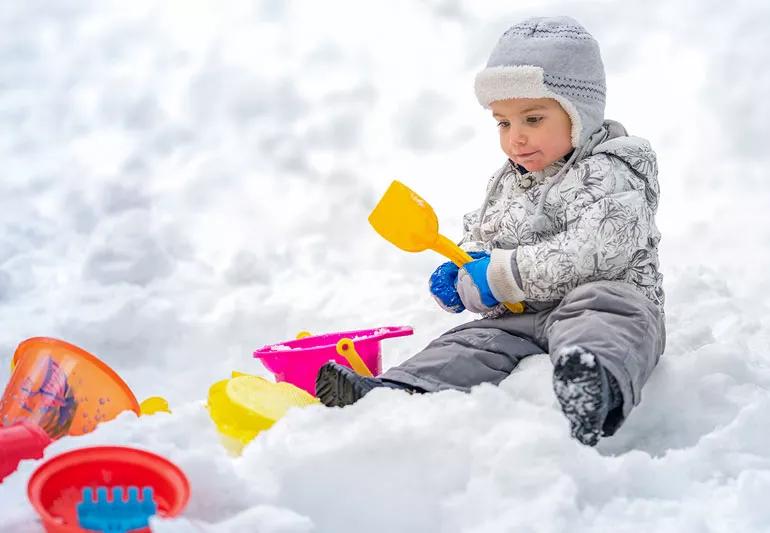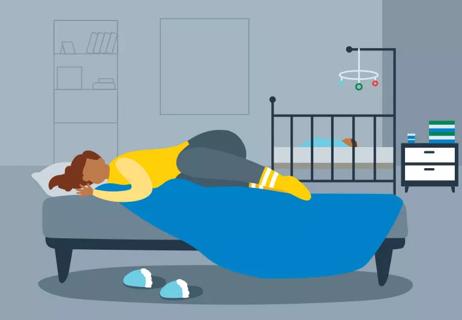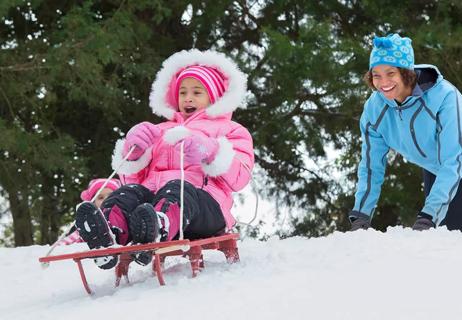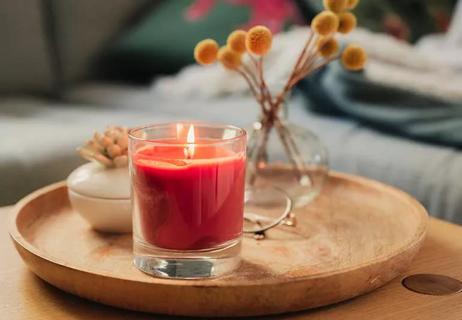Have a snow — ball and help them strengthen their developmental skills

While we’re running around like mad securing shovels, driveway salt, bread, milk and toilet paper, kids are just loving what winter is dishing out. And while we might worry about letting our kids play in the cold, there are some benefits to letting them frolic in the snow.
Advertisement
Cleveland Clinic is a non-profit academic medical center. Advertising on our site helps support our mission. We do not endorse non-Cleveland Clinic products or services. Policy
“Even though it’s cold outside, it’s still important to get out there when you can,” says occupational therapist Jennifer Negrey, MOT, OTR/L, BCP, CLT. “During the warmer months, we encourage at least three hours of outdoor play. But in the winter, aim for an hour.”
Negrey adds that you don’t have to keep the kids outside for an hour straight. Instead, break the time up throughout the day. The key is to get them outside and keep them active.
If you have school-aged children, you know the value of having fun things to do year-round. But Negrey says that right now, babies and toddlers can benefit from developmental activities as well. So don’t leave them out of the family fun.
“Kids have developmental milestones that they’re supposed to reach at certain ages. We as therapists know all of those milestones and we know what we should be working on and looking for. But sometimes, parents aren’t aware. And if they’re not seeing other kids that age, they’re not sure what their child should be doing,” Negrey explains. By providing activities at home for your little one, you can help make sure that they reach those milestones on time.
If you’re wondering if your child is on track, Cleveland Clinic Children’s Outpatient Therapy department offers virtual community education classes to help. Classes are free and anyone can attend. Their “Is This Typical?” class covers development milestones, atypical behaviors and ways to help kids pick up new skills at home.
Advertisement
Pump the brakes on that trip to the arts and crafts store. Instead, get inspired by items that you have around the house.
“You can do so many cost-friendly activities at home,” says certified therapeutic recreation specialist Leah Young, CTRS. “There’s no need to run out and buy a ton of supplies from the craft store. Just use simple items from around the house.”
Building snowmen and taking on sledding hills can bring on a lot of giggles and squeals. Outdoor activities like these can also provide many benefits for kids.
Those benefits include:
If you’re looking for a little snow-day inspiration, here are a few ideas. The best part — kids of all ages can participate.
These experiments are good for helping kids build cognitive (thinking or reasoning) and fine motor (using smaller muscles in hands and wrists) skills.
Put small amounts of different liquids in empty bottles or containers and place them outside. The kids can check the containers to see how long it takes for the different liquids to freeze. For instance, they can compare how long it takes hot water to freeze vs. cold water or see if soda freezes faster than juice.
For this activity, you’ll need:
Put the dish soap in the cup/bottle and then fill it halfway with baking soda. Mix in the warm water and add a few drops of food coloring. Build a small snow “volcano” around the cup/bottle and make sure that you don’t cover the opening. Once it’s all set, let the kids pour the vinegar in the cup/bottle and watch the volcano erupt. Keep in mind that more vinegar means even bigger eruptions.
Bubbles are even better on ice. To make frozen ones, you just need bubble solution and a bubble wand. However, if you want the strongest frozen bubbles in town, you can poke around the internet for the perfect bubble solution recipe. Once you have your bubble juice of choice, take the kids outside and have them blow bubbles close to the snow instead of up in the air. Once the bubbles land on the snow, the kids can watch them freeze and examine the patterns that form on the surface.
While some of these activities are classics, you probably never thought about how they can help kids build and strengthen a variety of skills.
Advertisement
But when it’s too darn nippy to hang outside, you can still bring the winter fun inside. Give these activities a try.
Fill the bathtub up with snow. Let the kids sit outside of the tub and scoop the snow into buckets or cups. They can also use cookie cutters to make snow shapes or bury toys in the snow and dig them out. This indoor frosty fun is good for developing sensory and fine motor skills.
Advertisement
Instead of just cheering on Team USA from the couch, create gold-medal moments for your home team. Have a curling match in the kitchen, bobsled down a pillow hill or ice skate on the carpet by putting wax paper on the bottom of everyone’s shoes. If you run out of events, let the kids come up with their own Olympic sports. This is a wonderful way to work on cognitive, gross motor, sensory and social skills.
Break out the hot cocoa mix and line up some colorful mugs and tasty toppings (maybe even using snow!?) Let your kids read the instructions for how to prepare the cocoa and ask them a few questions to see if they understand what they’re reading. Then, talk about what they might want to put in their cocoa. It doesn’t matter how silly the conversation gets because self-expression is one of the goals of this activity. Once they make the hot cocoa according to the directions and add their toppings of choice, sip and savor the time together.
Not only is this a delicious way to bond, but it also lets your kids work on their communication, sensory, fine motor, cognitive and social skills.
Remember when we said you can have fun with stuff that you have around the house? Here’s a prime example. Grab some cotton balls and straws and make sure you have enough space for a safe race. Create a finish line by putting some tape on the floor. Place a few cotton balls on the floor and have the kids blow them towards the finish line with the straws. For more of a challenge, you can make this a team event. This activity is a good way for kids to exercise those sensory, cognitive, gross motor and social skills.
Advertisement
“I encourage parents to provide babies and toddlers with those learning opportunities that they’re missing out on,” says Young. “Plus, since it’s cold and we’re in a pandemic, you can’t always take those little ones out to do things. Give them the sensory experiences that they’ve been missing. Get on the floor with them. Provide exploratory play opportunities and let them move around with their bodies.”
Young adds that some good ways to provide sensory experiences include hand painting or foot painting. You can even put some snow on a high chair tray and let your little one explore it with their hands.
Keep the winter theme going by getting books about the season and reading them to your kids. Plan crafts to go along with the books or have your kids retell the stories by acting them out. They can also draw pictures in the order that each story happens.
Storytime is good for language and communication, and social and cognitive skills. It’s also one of the best experiences that parents can provide for their kids.
“Books are very beneficial so, read to your kids. That’s one of the easiest tasks that a parent can do,” says Young.
Learn more about our editorial process.
Advertisement

Experts recommend having infants sleep in your bedroom but not in your bed

An ER doc shares tips for being careful while having fun

Tips for clearing your snow more safely

Candles release hydrocarbons into the air, but don’t pose a significant health risk

Tips for a fun, safe holiday for adults and children

Type 2 diabetes isn’t inevitable with these dietary changes

Applying a hot or cold compress can help with pain